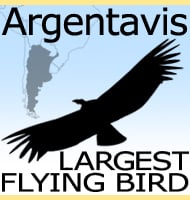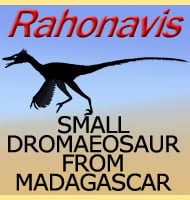In Depth
Although known from very well preserved remains, there is still quite a bit of mystery surrounding Limusaurus. Study of the bones has revealed that it is a member of the Ceratosauria (the first one known from Asia), a group of theropods defined by the type genus Ceratosaurus. However the one specimen where the skull has been preserved indicates that Limusaurus did not have teeth and instead made do with a beak-like mouth. Additionally gastroliths have also been found along with Limusaurus remains, the presence of which is usually a herbivorous trait.
These characteristics are very similar to the later ornithomimosaurs of the Cretaceous, many of which have also been found with toothless beak-like mouths and gastroliths. However there is no one rule as to what ornithomimosaurs ate (though a few select genera are a little easier to ascertain) because the ‘beak could have been used to crop plants or catch small vertebrates like lizards. While gastroliths are usually associated with the grinding of plants it is not entirely unknown for predators to also have them, particularly piscivores. Another well-known example of a theropod dinosaur having gastroliths is Lourinhanosaurus, a theropod thought to be similar to dinosaurs like Sinraptor and Allosaurus. For this reason Limusaurus may have been a herbivore, specialist carnivore or perhaps even an omnivore, speculations that will carry on in the absence of definitive evidence to prove one above the others.
Limusaurus is also noted for having four digits on its hands, something which reveals it to be a primitive form of theropod. Additionally these digits are composed of numbers II, III, IV and V, with digit I being reduced to give the appearance of a ‘four fingered’ hand. This is in contrast to previous theories about theropods since digit reduction was thought to take place on the ulna side of the hand rather than the radius side (the fore arms of vertebrates are made up of two bones called the ulna and radius) as seen in Limusaurus. Because Limusaurus is so far only known from sub adult remains it is quite possible that it may have grown slightly larger than the 1.7 meters stated above.
Limusaurus is far from being the only theropod dinosaur known from the Shishugou Formation with other genera including Sinraptor, Guanlong, Monolophosaurus, Zuolong and Haplocheirus. Other types of dinosaur from this formation include the sauropod Mamenchisaurus and the basal ceratopsian Yinlong.
Further Reading
– A Jurassic ceratosaur from China helps clarify avian digital homologies. – Nature 459(7249):940-944. – X. Xu, J. M. Clark, J. Mo, J. Choiniere, C. A. Forster, G. M. Erickson, D. W. E. Hone, C. Sullivan, D. A. Eberth, S. J. Nesbitt, Q. Zhao, R. Hern�ndez, C.-k. Jia, F.-l. Han & Y. Gou – 2009. – Reply to “Limusaurus and bird digit identity”. – Nature Precedings – X. Xu, J. Clark, J. Choiniere, D. Hone & C. Sullivan – 2011. – New anatomical details of the basal ceratosaur Limusaurus and implications for the Jurassic radiation of Theropoda. – Abstract of Papers. 74th Annual Meeting Society of Vertebrate Paleontology. – Journal of Vertebrate Paleontology. p. 235. – J. Stiegler & S. Wang & X. Xu – 2014. – Limusaurus inextricabilis (Theropoda: Ceratosauria) gives a hand to evolutionary teratology: a complementary view on avian manual digits identities. – Zoological Journal of the Linnean Society. 176 (3): 674–685. – G. Guinard – 2016.









